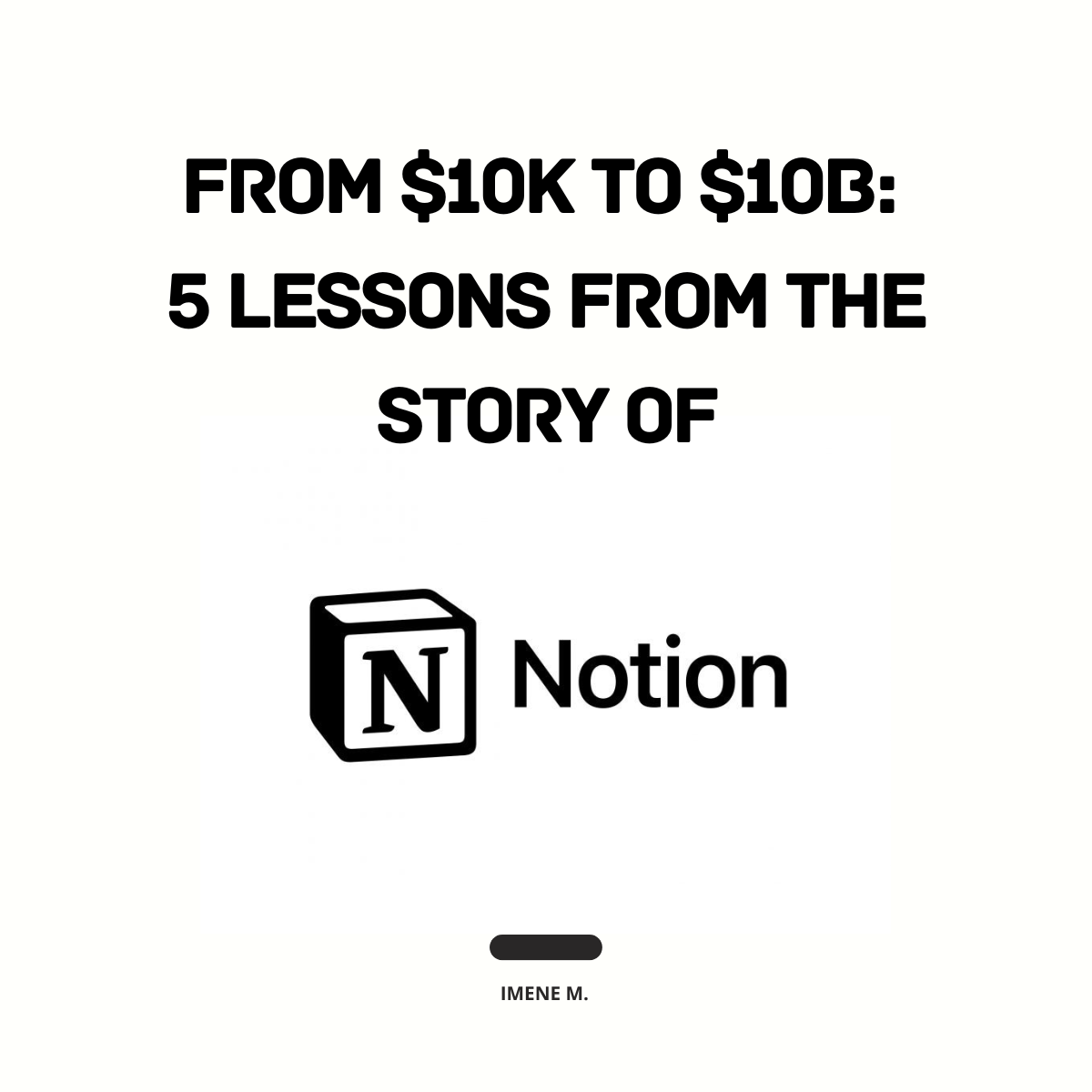Notion is one of the greatest comeback stories in modern tech.
Here’s what most people don’t know:
In 2015, they were down to their last $10K in the bank.
Today? Notion is valued at $10B+ and used by 30M+ people globally.
Here’s how Ivan Zhao rebuilt Notion from rock bottom:
1- Burn It Down to Build It Right
Notion 1.0 failed.
Too clunky. Too buggy. Too slow.
Ivan didn’t try to fix it, he scrapped the entire codebase and moved the team to Kyoto to rebuild from scratch.
They stayed in a $1,000/month apartment, worked in cafés, and went all in on a simple mission:
“Empower everyone to shape the tools that shape their lives.”
2- Design > Growth Hacks
Most startups hire a Head of Growth early.
Notion? They hired a Head of Design.
Ivan obsessed over details most people overlook:
• Frictionless UX
• Playful brand tone
• A blank page that feels like possibility
The product grew itself because people loved using it.
3- Community as Distribution
No massive ad budget. No celebrity endorsements.
Notion grew because creators loved it.
Ivan leaned into the cult following:
• Featured power users
• Let templates go viral
• Turned superfans into evangelists
By the time they raised money from Sequoia in 2020, they didn’t need capital, they had leverage.
4- Build for the Craftsman
Notion wasn’t built for “everyone.”
It was built for:
• Designers
• Writers
• Developers
• Knowledge workers
People who care about quality tools, and share them.
As Sequoia said: “It’s not just software. It’s an attitude.”
5- Fall in Love with the Process
Most founders chase unicorn status.
Ivan chased product excellence.
He lived in the same apartment for 7 years. Worked with a 4-person team for 3 years. Moved cities to go heads-down and rebuild.
He didn’t just build a tool, he crafted it.
And now millions of people build their lives and businesses on top of it.
Takeaway?
Success doesn’t come from chasing trends.
It comes from:
• Deep care for your craft
• Obsessing over details
• Building something people love
What happens if you do that?
Distribution takes care of itself.
—


